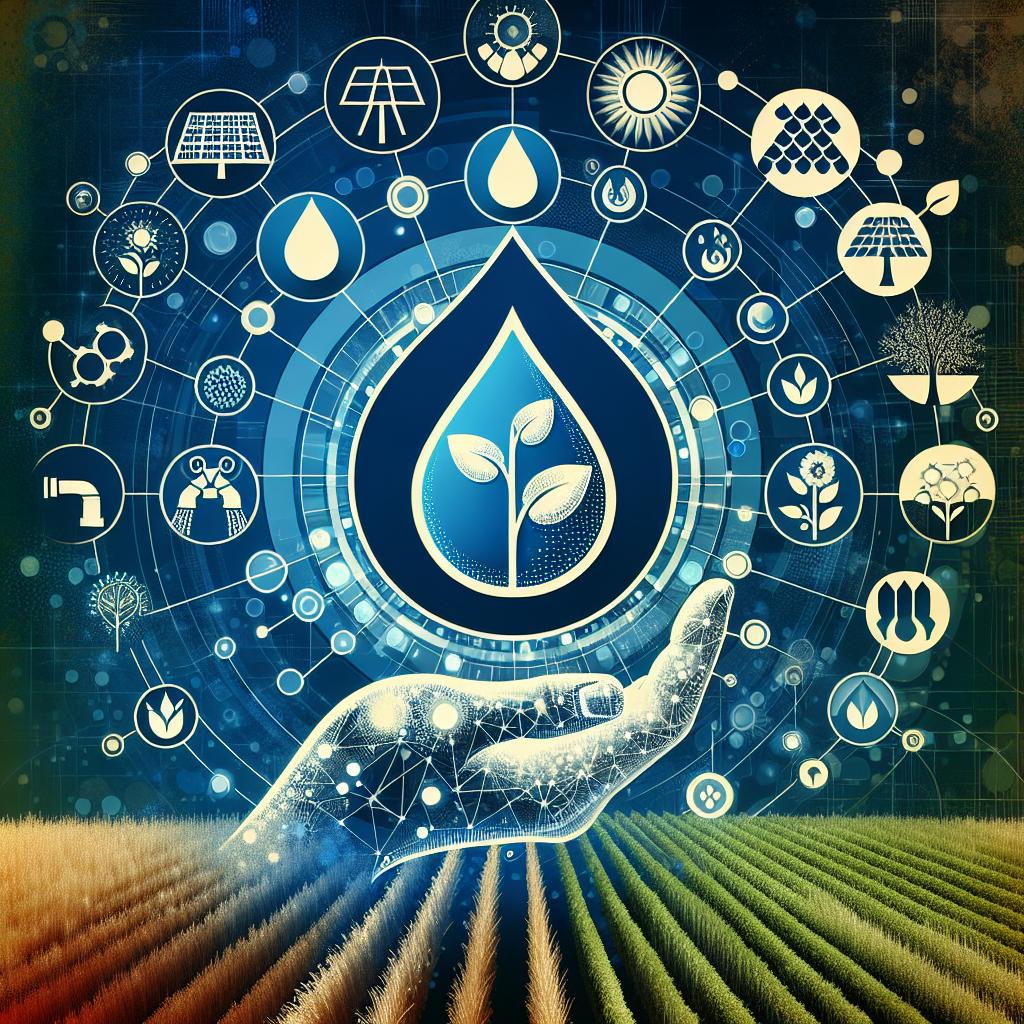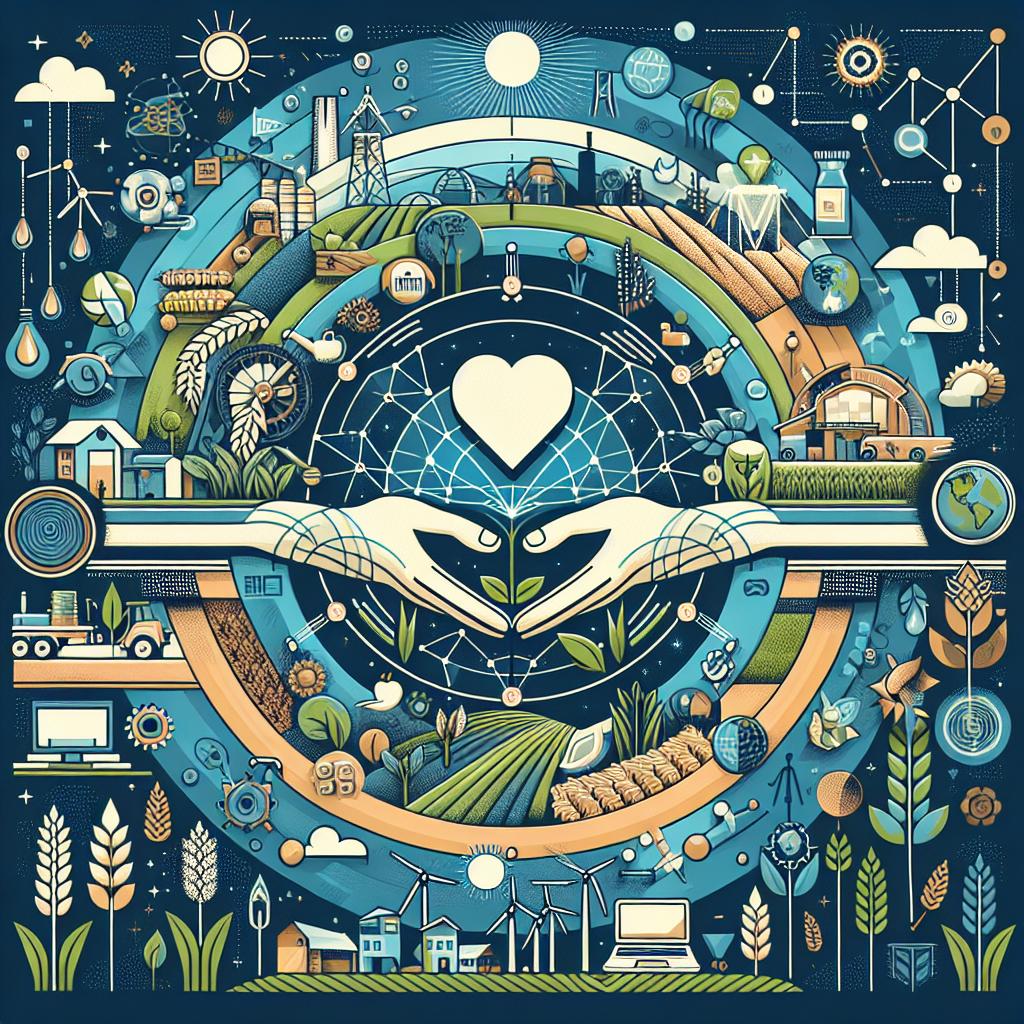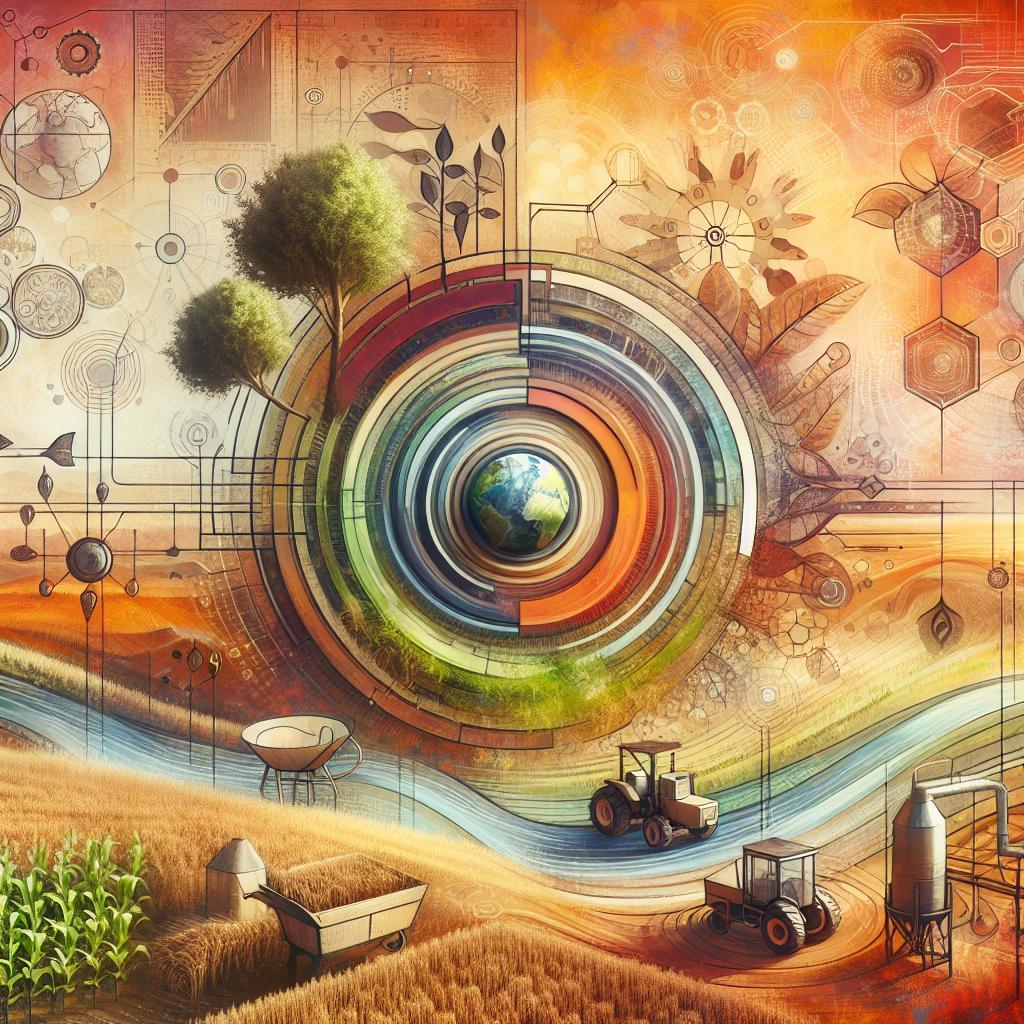This post may contain affiliate links which means I may receive a commission for purchases made through links. Learn more on my Private Policy page.
The Impact of Irrigation Practices on Farm Carbon Footprint
Imagine walking through a sun-drenched field, where emerald rows of crops sway gently in the breeze. beneath the surface, however, a complex dance is taking place—a delicate balance of water, soil, and climate that ultimately shapes the future of food production and our planet. As farmers strive to maximize yields and minimize environmental impact, irrigation practices emerge as a key player in this intricate performance. But how do these practices influence a farm’s carbon footprint? In this article, we’ll dive deep into the often-overlooked relationship between irrigation techniques and carbon emissions.From conventional methods to innovative technologies, we’ll explore how each drop of water can either contribute to or reduce our agricultural carbon footprint. Join us on this friendly exploration, as we uncover the hidden connections between hydration and sustainability on the farm. After all,in the quest for a greener future,learning to make every drop count is more significant than ever!
exploring the Green Side of irrigation: Understanding Carbon Footprint Dynamics
As the world increasingly focuses on sustainability, the practices we use for irrigation play a pivotal role in shaping the overall carbon footprint of farming activities. Traditional irrigation techniques often lead to inefficiencies that increase greenhouse gas emissions due to excessive energy consumption and water wastage. By understanding the dynamics of these processes,farmers can make informed decisions that align with both productivity and environmental stewardship. Consider these strategies that not only enhance water use efficiency but also reduce carbon emissions:
- Drip Irrigation: Minimizes water wastage by delivering water directly to the plant roots.
- Rainwater Harvesting: Utilizes natural precipitation and reduces reliance on pumped water supplies.
- Soil Moisture monitoring: Optimizes irrigation scheduling based on real-time soil moisture data.
- Planting Cover Crops: Improves soil health, reducing the need for synthetic fertilizers and irrigation.
Quantifying the impact of these practices can provide a clearer picture of their contribution to reducing carbon emissions. The table below illustrates the potential reduction in carbon footprint associated with various irrigation methods:
| Irrigation Method | Estimated Carbon Emission Reduction (kg CO2/ha/year) |
|---|---|
| traditional Flood Irrigation | 200 |
| Drip Irrigation | 500 |
| Sprinkler Irrigation | 300 |
| Rainwater Harvesting | 400 |
by actively engaging in these practices, farmers are not only maximizing their crop yields but are also championing the cause of sustainability. Transitioning to more eco-friendly approaches can alleviate the carbon footprint and create a resilient agricultural ecosystem that thrives in the face of climate change. The journey towards greener irrigation is not just crucial for farmers; it’s essential for our planet’s health.

Watering Wisely: Sustainable Irrigation Techniques for a Lighter Footprint
When it comes to reducing the carbon footprint on farms, adopting sustainable irrigation techniques plays a vital role. By leveraging methods that use less water and energy, farmers can make substantial gains not only in crop health but also in their environmental stewardship. Here are some innovative techniques to consider:
- Drip irrigation: This method delivers water directly to the plant roots, minimizing evaporation and runoff, which ultimately conserves water and reduces energy use.
- Rainwater Harvesting: Collecting rainwater can provide an additional water source,reducing reliance on traditional irrigation methods and lowering the energy required for water pumping.
- Soil Moisture Sensors: Implementing technology that monitors soil moisture can optimize watering schedules, ensuring that crops receive the exact amount of water needed.
To better understand the synergies between irrigation practices and carbon emissions, consider the following simple comparison of common methods:
| Irrigation Method | Water Efficiency | Energy Usage |
|---|---|---|
| Surface Irrigation | Low | High |
| Drip Irrigation | high | Low |
| Sprinkler Irrigation | Medium | Medium |
Adopting these techniques not only helps in resource conservation but also leads to healthier soils and lower greenhouse gas emissions, creating a win-win scenario for farmers and the planet alike.

Balancing Act: The Role of Technology in Efficient Water Management
In today’s rapidly changing agricultural landscape, leveraging advanced technologies has become a vital component in managing water resources effectively. With tools like precision irrigation and remote sensing, farmers are now equipped to monitor soil moisture levels and apply water more efficiently. By utilizing data-driven techniques, they can significantly reduce water wastage and enhance crop productivity, all while keeping their carbon footprint in check. The integration of technology allows for tailored irrigation schedules that align more closely with the actual needs of the crops, leading to healthier yield outcomes and minimal environmental impact.
The deployment of such technologies can have a ripple effect on sustainability goals. Consider the following benefits of efficient water management through technology usage:
- Reduction in water usage: Smart irrigation systems can cut water consumption by up to 30%.
- Enhanced crop resilience: Consistent moisture levels help crops withstand climate extremes.
- Carbon footprint reduction: Efficient water practices lower energy costs associated with irrigation.
To illustrate the relationship between irrigation practices and carbon emissions, here’s a concise comparison of traditional versus modern irrigation techniques:
| Technique | Water Usage | Carbon Emissions |
|---|---|---|
| Traditional Irrigation | High | Moderate |
| Drip Irrigation | Low | Low |
By embracing these technologies, farmers not only gain control over their water management practices but also contribute to a more sustainable future while mitigating their impact on the environment.

Bridging the Gap: Promoting Best Practices for Farmers and the Planet
In the quest for sustainable farming, the choice of irrigation practices plays a significant role in determining a farm’s carbon footprint. By adopting efficient irrigation techniques, farmers can not only conserve water but also alleviate the negative impact of agriculture on greenhouse gas emissions. Some of the *best practices* that promote both environmental protection and agricultural productivity include:
- Drip Irrigation: Delivers water directly to the plant roots, minimizing evaporation and runoff.
- Rainwater Harvesting: Collecting and storing rainwater reduces dependency on conventional water sources.
- Soil Moisture Monitoring: Utilizing sensors helps to optimize water application and reduce waste.
The implementation of these practices not only reduces carbon emissions associated with irrigation but also enhances soil health and crop resilience. Below is a simple overview of how various irrigation methods impact carbon footprint:
| Irrigation Method | Carbon Footprint Impact | Water Efficiency |
|---|---|---|
| Surface Irrigation | High | Low |
| Drip Irrigation | Low | High |
| Sprinkler Irrigation | Moderate | Moderate |
By choosing tailored irrigation strategies, farmers not only support their productivity but also contribute positively towards the planet’s health. Collaborating with agronomists and engaging in community knowledge-sharing can further amplify the transition to sustainable practices, ensuring that the earth thrives alongside agricultural endeavors.
the Conclusion
As we turn the final page on our exploration of the vibrant interplay between irrigation practices and farm carbon footprints, it becomes clear that our agricultural choices resonate far beyond the fields. The way we manage our water not only nourishes crops but also shapes our planet’s future. Whether it’s through innovative drip systems, sustainable rainwater harvesting, or mindful crop rotation, every decision we make can help cultivate a greener world.
So,as you step away from this article,consider your own role in this equation. Perhaps you’re a farmer finding new ways to optimize water use, or a consumer looking to support sustainable practices.No matter your position, remember that we are all part of the solution. Together, let’s sow the seeds of change, ensuring that our farms thrive while treading lightly on the Earth. after all, a flourishing farm isn’t just a bounty of crops—it’s a promise of a healthier planet for generations to come.Happy farming, and may your journey towards sustainable agriculture be as rewarding as it is indeed impactful!
This post may contain affiliate links which means I may receive a commission for purchases made through links. Learn more on my Private Policy page.

